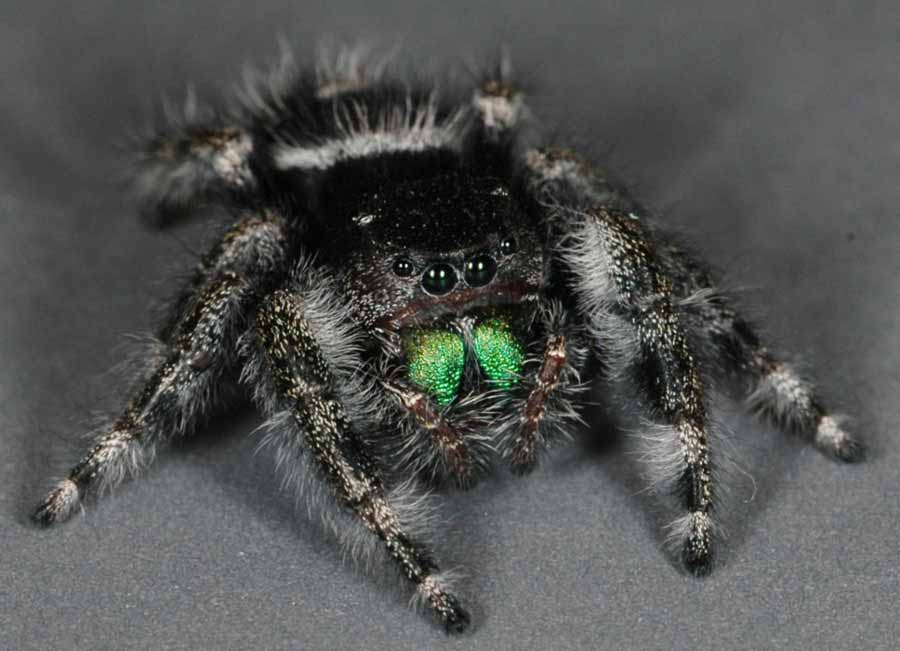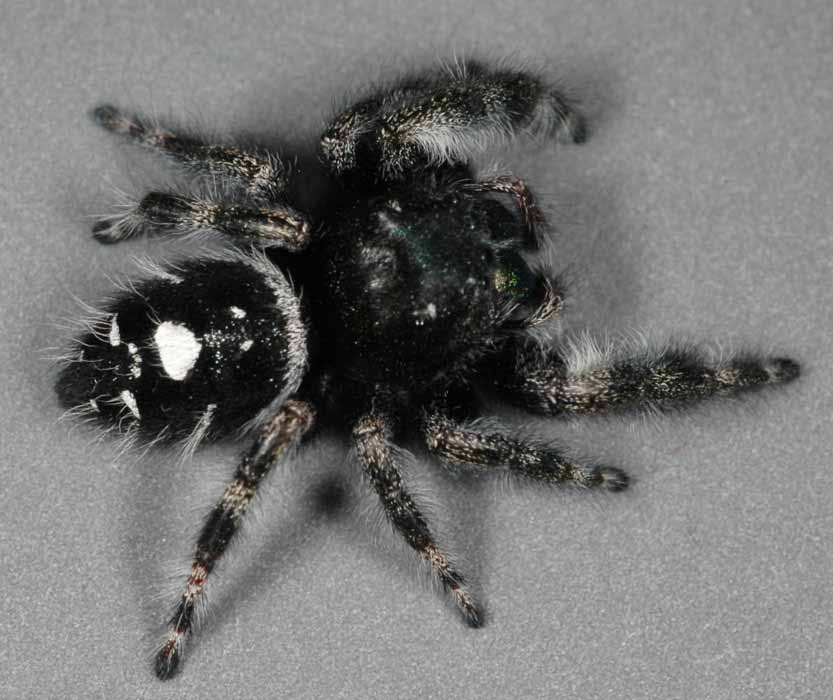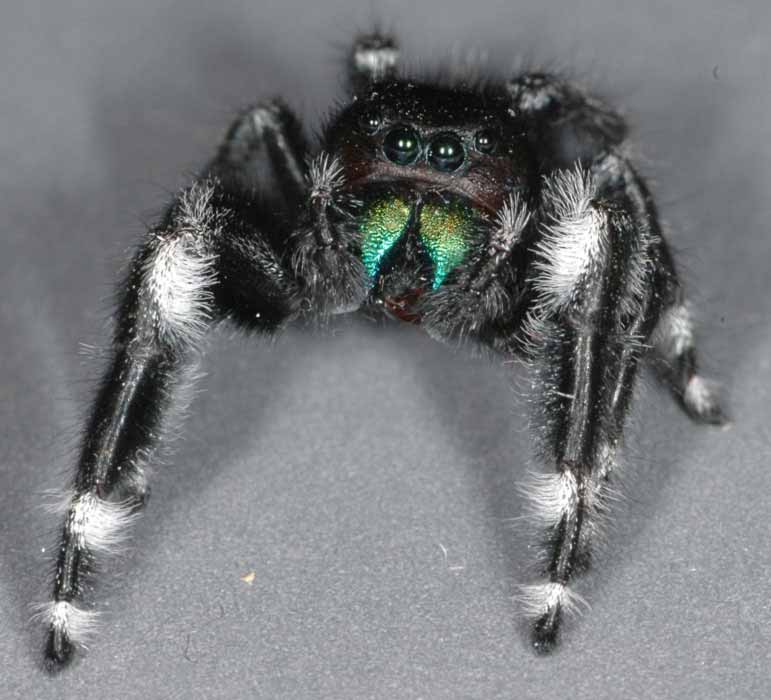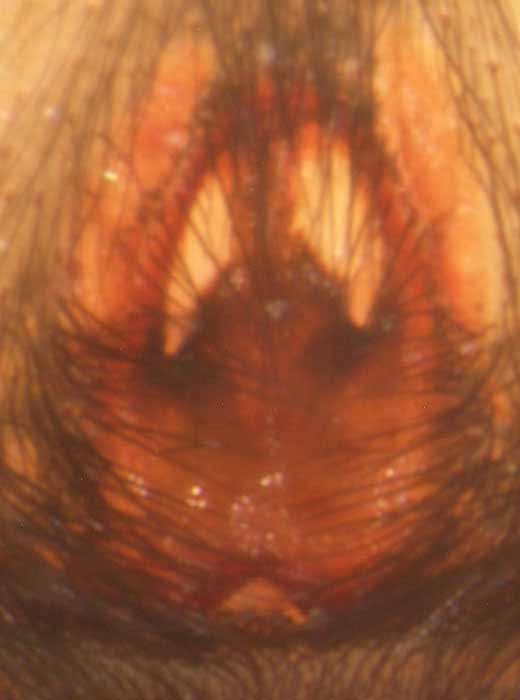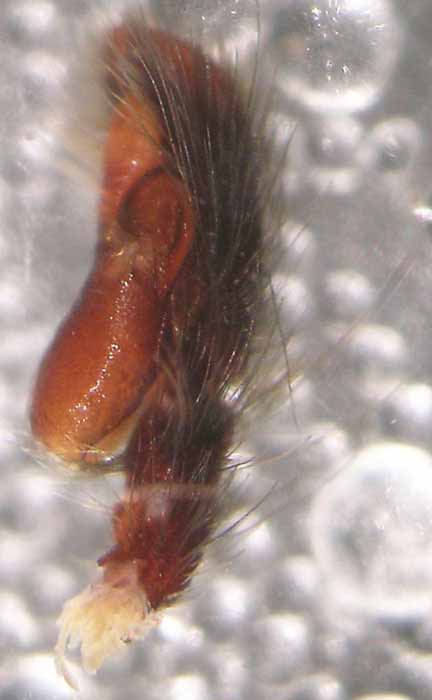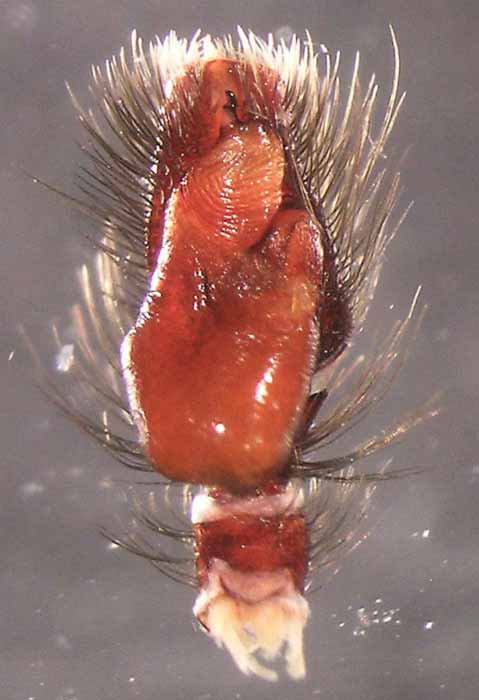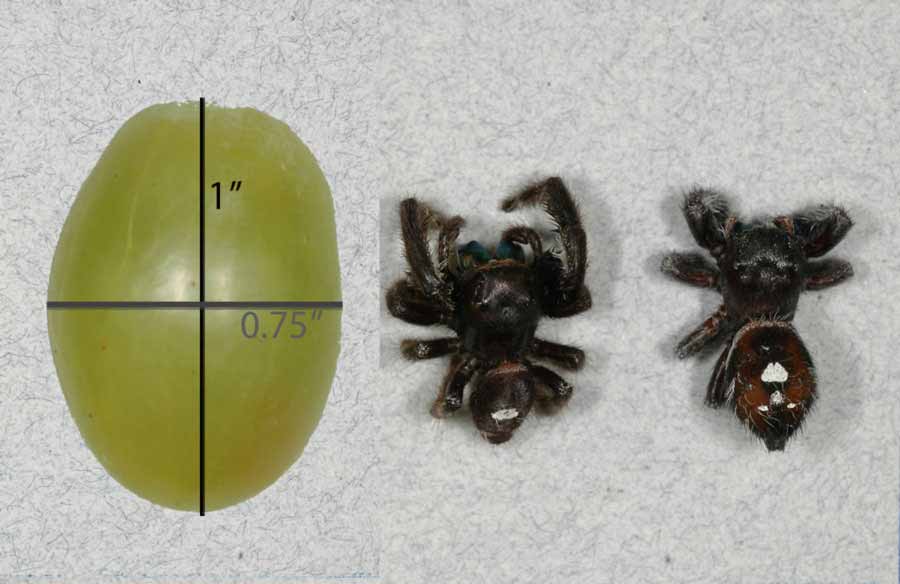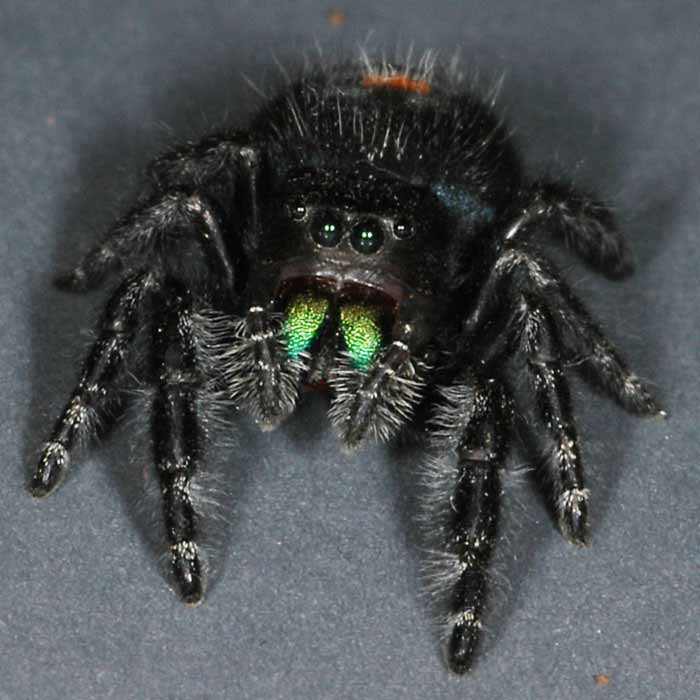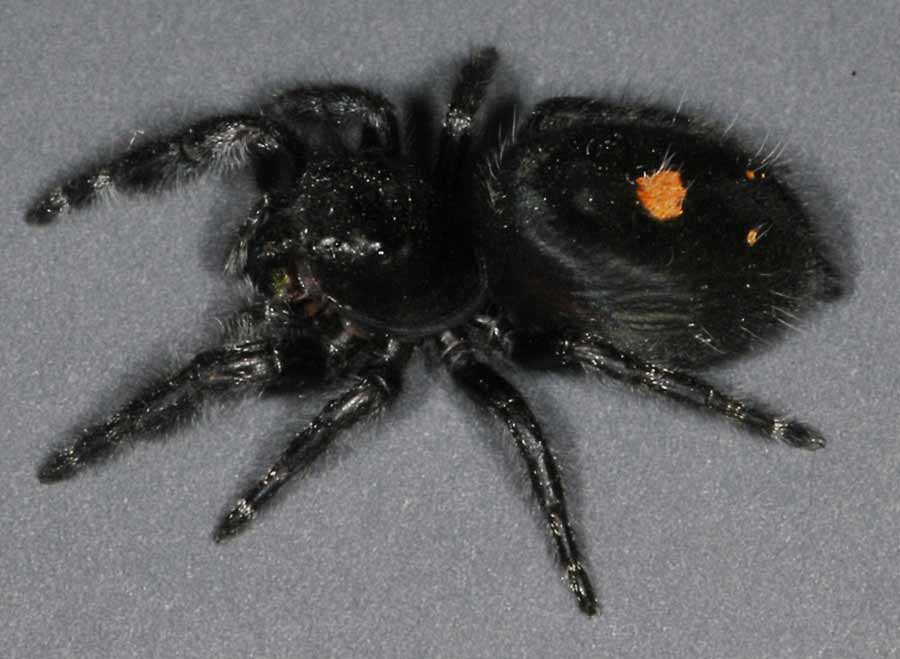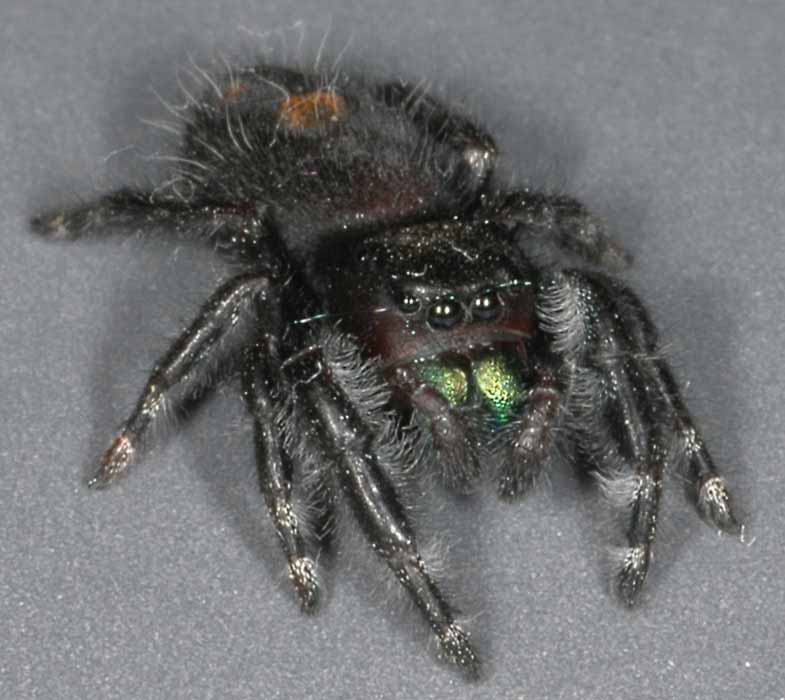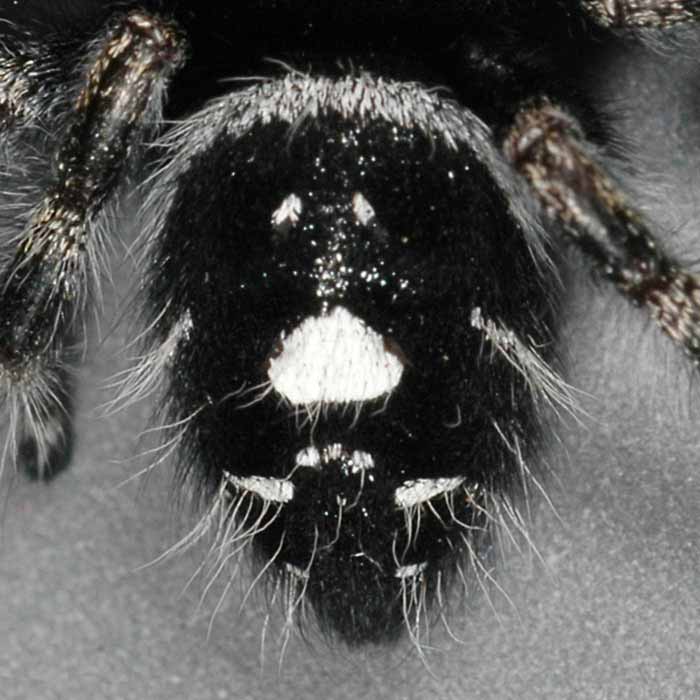Phidippus audax
|
adult female, live; face view |
|
adult female, live; dorsal view |
|
adult male, live; face view |
|
adult male, live; dorsal view |
|
female genitalia; epigynum |
|
male genitalia; palp, lateral view |
|
male genitalia; palp, ventral view |
|
grape size comparison with adult spiders; male (left), female (right) |
|
juvenile female, live; face view |
|
juvenile female, live; dorsal view |
|
juvenile male, live; face view |
|
juvenile male, live; dorsal view |
|
diagnostic feature; white abdominal markings of adults |
Current valid name
Phidippus audax (Hentz) (family Salticidae)
Recognition and diagnostic features
Black jumping spider with 3 white dots on the abdomen in the matures; dots in immatures can be orangish or yellowish.
Spider
Body lengths when mature: male: 4.4 - 15.2 mm, female: 4.5 - 18.1 mm
In subadults, white abdominal spots can be orangish in color.
Egg sac
Number of eggs per sac: 64 (range 15-164); 186 ± 69
Number of egg sacs per female lifetime: 2.75 (range = 1 - 6)
Size of egg: 1.26 ± 0.05 mm
Time of year eggs are likely to be laid: March through May
Distribution
In California: southern California, Central Valley
Elsewhere: very common throughout the eastern U.S., introduced to Hawaii and Nicobar Island
Native to North America
This species has been transported and become established outside of its range.
Biology
Diurnal hunter. Can be found in grape bunches, and can lay eggs in bunches. Very common in the eastern U.S., introduced into California where it has become established in southern California (rare) and the Central Valley (sporadically abundant). Matures found April to June, immatures found before and after that time.
Status in table grapes
Level of Incidence: can be sporadically abundant in isolated vineyards
Level of Concern in New Zealand: WPNZ (May 2010) nr, BORIC (Dec 2011) nr (not listed), MAF-BPRA (2002) nr (coding definition)
Level of Concern in Australia: WPAU (2006) nr (coding definition)
Level of Medical importance: painful bite due to fang puncture and strong cheliceral muscles, but minor toxicological effects of venom
Common name
Bold jumping spider for species, jumping spiders for family
Taxonomic history
Many names through history, but stable the last 100 years.
Selected references
Anderson, J. F. 1990. The size of spider eggs and estimates of their energy content. J. Arachnol. 18: 73-78.
Edwards, G. B. 2004. Revision of the jumping spiders of the genus Phidippus (Araneae: Salticidae). Occasional Papers Florida St. Coll. Arthropods 11: 1-156.
Roach, S. H. 1988. Reproductive periods of Phidippus species (Araneae, Salticidae) in South Carolina. J. Arachnol. 16: 95-101.

